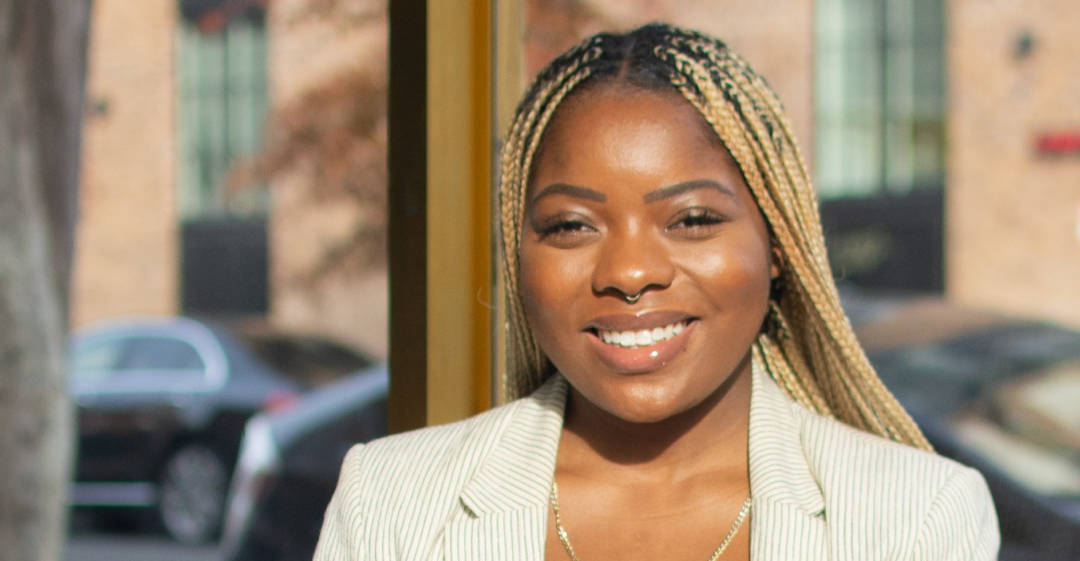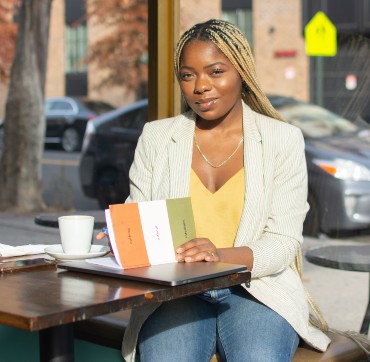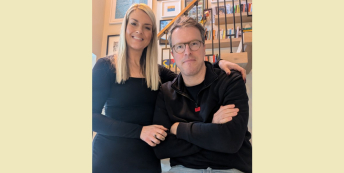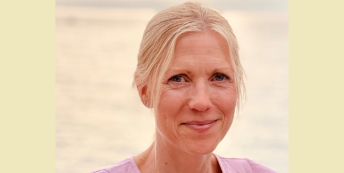“I was becoming overwhelmed with the volume of work.”

What work were you doing previously?
I was a graphic designer at a contemporary art museum.
What are you doing now?
I'm the founder and creative director of Aya Paper Co., a sustainable stationery and gift company.
How did you feel in your work before you decided to make the change?
I loved being a graphic designer.
Being at a museum allowed me to work closely with artists to create designs that made their work accessible to wide audiences.
I was also the only designer at the institution, so that gave me a lot of freedom to create independently.
Why did you change?
While I enjoyed the independence the role gave me, I was becoming overwhelmed with the volume of work I was expected to produce, with no design team to support me and no room to grow into other areas of work.
I'm a creative person, but I'm also strategic and interested in growth and evolution. The job didn't give me the ability to strengthen these other talents.
Alongside this job, I was also a freelance designer working on other print and digital projects to keep me interested. But even that was becoming overwhelming.
Starting, executing, and finishing new projects every month was taking a lot out of my creativity. I was frustrated that I would put so much work into things that I'd have little to no input on once the deliverables were complete.
Overall, I just was yearning for the opportunity to build something new and exciting; something I was passionate about and could spend a long time nurturing.
For a while, I tried to look for that in other job opportunities, but I reached a lot of dead ends. Even though I had a lot of talent and experience, being a young designer in the city without an MFA made it difficult to land the exciting gigs I really wanted.
And I didn't want a boring agency job churning out designs for someone else.
When was the moment you decided to make the change?
Once I realised that finding another job I loved wouldn't be so simple, I began to think about starting my own business.
Instead of only offering freelance services, I decided to try a product-based business that would allow me to sell my designs at a larger scale, and give me the freedom to create what I wanted outside of any clients.
How did you choose your new career?
Greeting cards seemed like an affordable, simple product that I could create, with endless possibilities for designs.
I always loved sending cards to loved ones, but also noticed how cliched and stale most offerings were. Finding cards that I thought were actually beautiful and had words that I actually related to wasn't easy.
So I decided to create the things I wanted to see.
Are you happy with the change?
I'm very happy with this change.
I can't see myself doing anything else. I've never felt more fulfilled, at peace, and in control of my life.
What do you miss and what don't you miss?
I don't miss the rigidity of going into an office every day for eight hours, sitting in long meetings, doing work I'm not excited about, and navigating office politics.
Being my own boss allows me to get up when I want, have slow mornings, only take meetings that are valuable, and only do projects that are in alignment with my goals.
Being a young person with talent isn't always appreciated in industries where you're expected to 'put your time in'. It wasn't until I was working with my own team that I realised I was unintentionally making myself small in my past career to make others more comfortable. I really enjoy working with a team where everyone feels encouraged to showcase their talents and contribute their ideas.
The only things I really miss are the consistent income and benefits. Running your own small business is unpredictable, and I'm still learning to navigate the highs and lows.
How did you go about making the shift?
While still working at my design job, I spent six months planning Aya Paper Co. and then another seven months running it on the side.
When I quit my full-time job, I wasn't making my salary through the business yet, but I was ready to give it my full effort. There were a lot of opportunities coming up and I was getting exhausted trying to balance both – even having to take time off work sometimes in order to fulfill Aya obligations.
I was at a crossroads and decided to take a leap of faith.
How did you develop (or transfer) the skills you needed for your new role?
I did a lot of print design at my museum job which is probably what even got me interested in designing products.
Working with printers, deciding what print process to use, what paper to select, setting up print files, etc. are all things that I use when creating products for Aya.
I also managed interns at that job, which gave me some skills in reviewing CVs, interviewing, building, and managing my team now.
Many of the other skills I've used in this role were developed years prior, as an intern at start-ups, as an online community manager, and in college classes where I studied marketing, social media, and two terms in business school.
What didn't go well? What wrong turns did you take?
Honestly, I don't think there were any wrong turns.
Every choice I made contributed to me getting to where I am now so I don't view them as 'wrong'. Everything is just a lesson learned.
How did you handle your finances to make your shift possible?
I moved back home for a year to take financial pressure off of myself in the early stages of building the business.
That was definitely helpful and allowed me to take smart risks that ended up paying off.
What was the most difficult thing about changing?
The most difficult thing was learning to trust myself.
At my museum job, I had a boss who also had a boss who answered to a board, so things always had to get reviewed and approved by multiple people before being completed. By the time I was given a task, a lot of decisions had already been made for me.
When running my own business, especially in the beginning, I didn't have anyone else to bounce ideas off of. I couldn't defer to anyone else's judgement. I didn't have ten other sets of eyes looking at things before they were in the world.
That gave me a lot of anxiety around every decision I was making and I often doubted if it was the 'right' one. I also experienced a lot of decision fatigue and would put off things for days or weeks because I was so tired of making choices.
Over time, and with therapy, I was able to build up my confidence and trust in myself to make decisions that would be right for my company without being too stressed about them.
What help did you get? 
Mentors and advisors who have experience and knowledge that I don't.
A therapist to help me be the best version of myself for my business and navigate the stress of entrepreneurship.
Family and friends who support me and are willing to lend a hand when I need it.
A community of other business owners who are my peers and sometimes going through the same challenges as me. Sometimes we offer each other solutions, but other times we simply find comfort in knowing we aren't alone.
Local organisations like Makerhoods that helped me establish my business formally, create financial projections, and think like a CEO.
What resources would you recommend to others?
Find some mentors who are successful in the career you want.
There are some things you just cannot Google; having someone to ask for advice can go a long way.
IFundWomen is a great resource if you're looking for funding as a woman business owner.
What have you learnt in the process?
Everyone's journey is different!
My path to and through entrepreneurship doesn't look anything like what I read about on business blogs or articles. They always say to wait until your side hustle is bringing in your salary, or build up six months of savings, and do it all yourself, and work late nights and weekends. I didn't do any of those things, and my business is successful and I'm happy!
So I've learned not to compare my journey or choices with anyone else's.
What would you advise others to do in the same situation?
Trust yourself, have a safety net, and don't be afraid to take a risk.
Images © Shanté Carlan Photography
To find out more about SaVonne's business, visit www.ayapaper.co.
What lessons could you take from SaVonne's story to use in your own career change? Let us know in the comments below.



